|
|
|
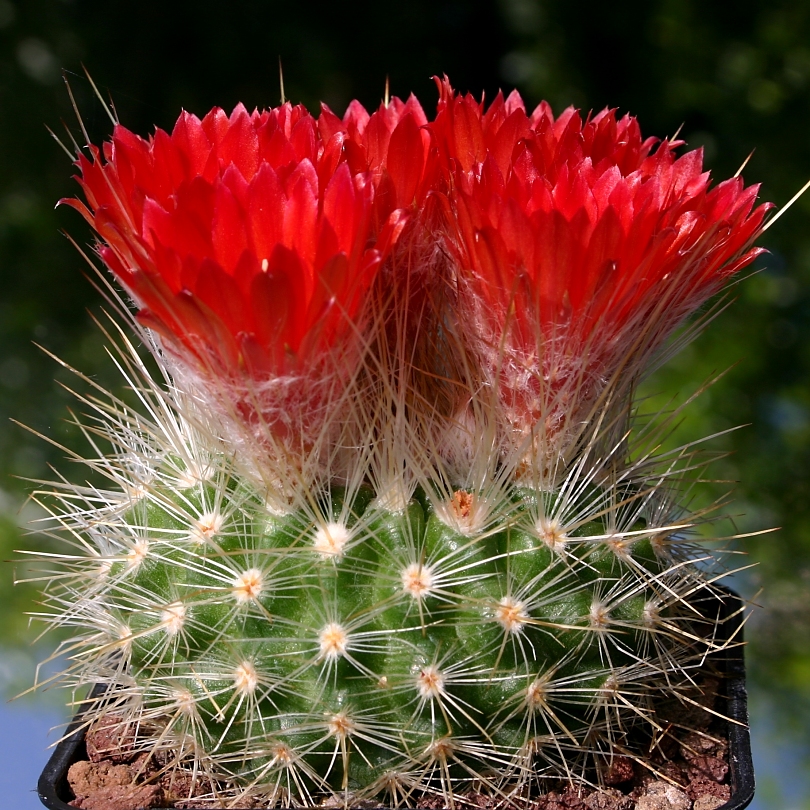
Parodia
penicillata var. nivosa
It has glowing flame-red flowers which contrast well against the dense white spines.
|
|
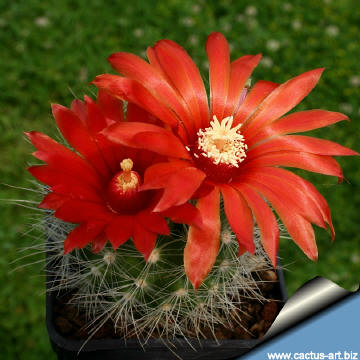 |
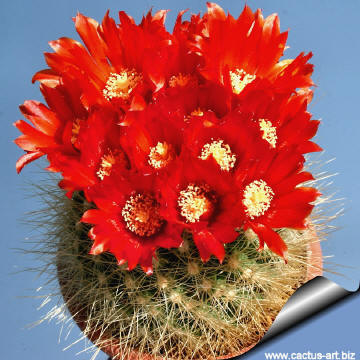 |
|
. |
|
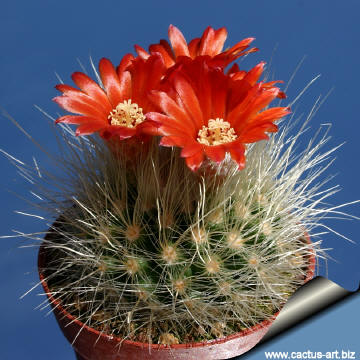 |
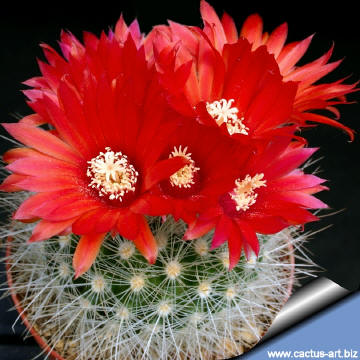 |
|
. |
|
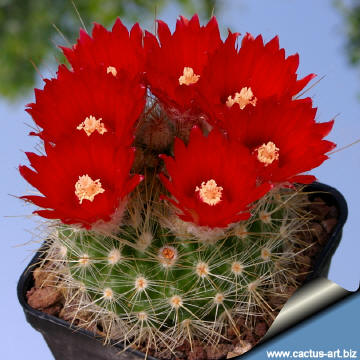 |
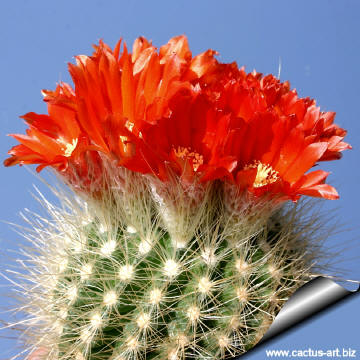 |
|


Advertising
|
|
|
|
|
Family:
Cactaceae (Cactus
Family)
Scientific name: Parodia penicillata var nivosa
Fechser
In:
Backeberg C., Das Kakteenlexikon, p. 460, 1966
Origin: Native to the highlands
of northern Argentina
Synonyms:
|
|
Description:
P. penicillata var nivosa is a
usually solitary, small-growing cactus, with
dense snow-white spines.
Stem: Pale green or bright green, spherical, later cylindrical,
growing up to 40-5m cm tall and 9 cm wide. With dense white wool apically.
Ribs: Several, spiraling, forming distinct conical tubercles.
Areoles: White.
Spines: Glassy, finely bristled, white, becoming very dense on old
specimens.
Radial spines: Up to 18, very thin, clear, and silky
Central spines: Longer (about 20 mm) and stiffer.
Flowers: Funnel-shaped,
about 3 cm in diameter, orange-yellow or brilliant red in an apical
circle. Pericarpels and floral tube covered with wool and bristles.
Dried
flower remains for a long time on the plant body after blooming.
Blooming time: Summer.
Fruit: Small.
Seed: Minuscule, glossy brown smooth.
|
|
|
|
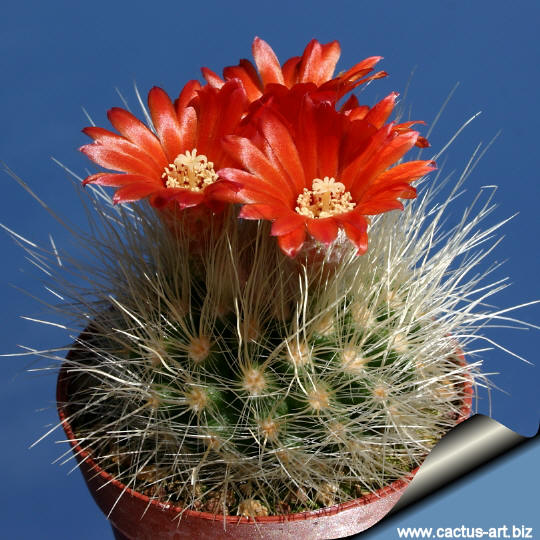
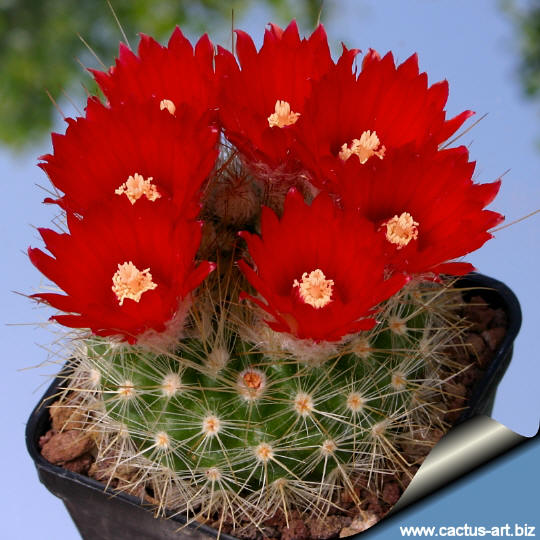
Cultivation:
Water
these plants regularly, and fertilize with a low nitrogen fertilizer
every 6 to 8 weeks- from mid-spring to late summer. This plant should
remain rather dry at other times (especially in winter), except for a
quick, periodic misting on warmer days in late winter. If it is kept
absolutely dry for a long period,
it tends to lose its roots in winter. It can
tolerate light frost (-1C°)
If the local climate is warm enough to grow this plant outside, be sure
that soil is well drained and sun if full, but with protection from
strong mid-day rays.
Propagation: By Seeds that are very fine
|
|
Photo of conspecific taxa, varieties, forms and
cultivars of Parodia nivosa .
|
|